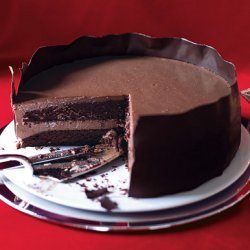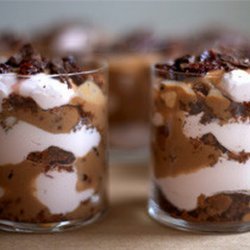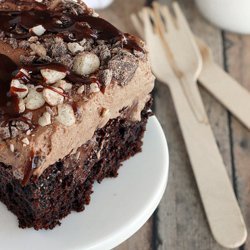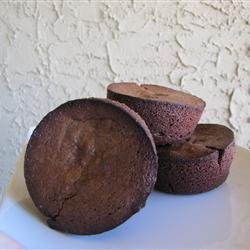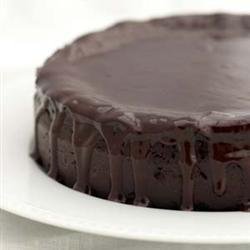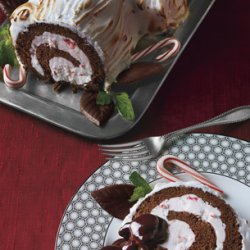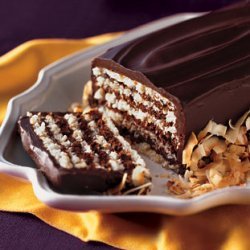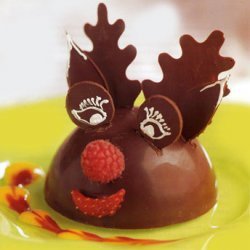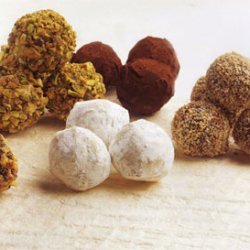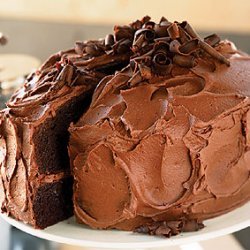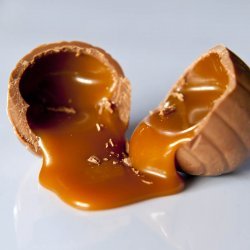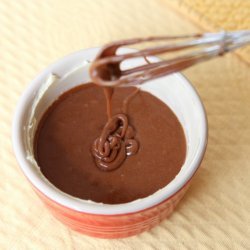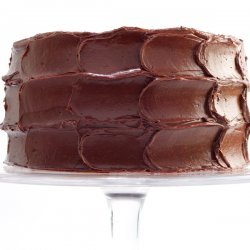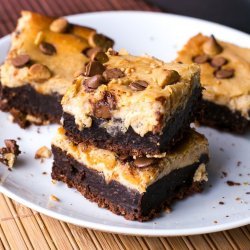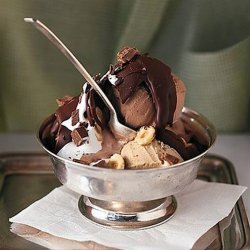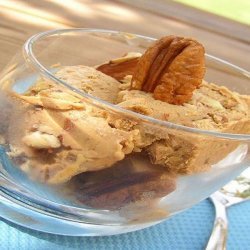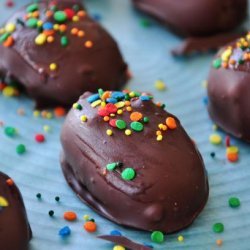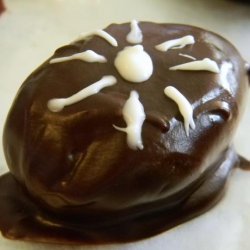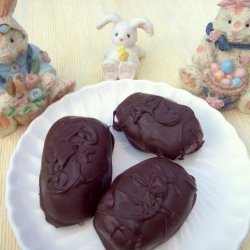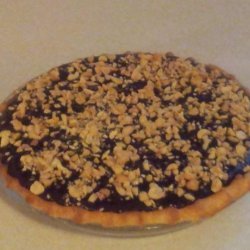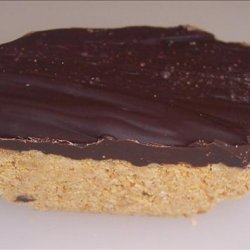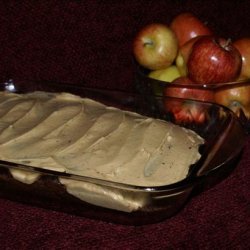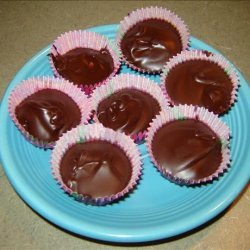Directions:
- Line a rimmed baking sheet with parchment paper and place a wire rack on the parchment. Set aside.
- Place the tempered chocolate in a warmed bowl. Following the directions for molding chocolate (see tips, below), carefully ladle the chocolate into the mold, taking care that the chocolate covers the entire mold. Turn the mold upside down over the bowl of tempered chocolate, allowing the excess chocolate to drip out, leaving just a thin coating on each indented cup. Tap the edge of the mold to release any air bubbles that might remain in the chocolate, to ensure a perfectly smooth coating. Wipe the edge of the mold clean on the edge of the bowl (you don't want to waste a drop of chocolate), then place the chocolate-coated mold, open side down, on the wire rack. A bit more chocolate will drip off. Let stand for about 4 minutes to allow the chocolate to begin to set.
- Just before the chocolate has fully set, use a paring knife or pastry scraper to clean the excess chocolate from the edge of the mold, returning it to the tempered chocolate, so that the finished eggs will have nice clean edges and to make it easier to unmold them.
- Transfer the mold, cavity side up, to the refrigerator. Let rest for 10 minutes to allow the chocolate to harden and retract from the sides of the mold.
- Line the baking sheet with a clean piece of parchment paper. Remove the mold from the refrigerator and invert it onto your hand. The egg shells should fall out. If not, rest your thumbs on the outside edge of the mold and place your first two fingers on the inside of the chocolate egg shape. Gently begin to lift the chocolate from the mold. Do not press or pull too hard or the chocolate will break. Carefully place the egg shapes on the prepared baking sheet until they are ready to be filled.
- To make the filling, place the chopped chocolate in the top half of a double boiler. Place over (not touching) gently simmering water in the bottom pan and heat, stirring frequently, until completely melted. Remove from the heat and set aside until just cool to the touch. Do not allow it to get too cold or it will begin to harden.
- While the chocolate is cooling, place the peanut butter in the bowl of a stand mixer fitted with the paddle and beat on medium speed just until softened. Add the slightly warm chocolate and beat until combined. The mixture will be quite stiff, so make sure it is well blended.
- Using a teaspoon, fill each egg shape with the peanut butter mixture, smoothing the top with a spatula or knife. If you prefer a soft filling, let the eggs rest at room temperature for about 1 hour before serving. If a firmer texture if preferred, place the eggs in the refrigerator for about 15 minutes to allow the filling to harden, then serve.
- Store, in a single later, covered and refrigerated, for up to 3 days.
- Tips:Molding Chocolate:
- You cannot mold tempered chocolate successfully in wood or other porous materials. Nor is glass a good choice. When you pour tempered choccolate into a glass mold, it immediately takes on the temperature of the glass, which if it is too hot or too cold will cause the chocolate to go out of temper. Antique metal molds, with interiors that have been damaged through years of use or the passage of time, are best used as wall decorations. Flexible plastic molds are terrific, but in time they begin to show wear and must be replaced. All of this is my way of saying that firm plastic and polycarbonate molds are the best choices for molding chocolate.
- Although you might have heard that coating a mold with fat will make removing the finished product easier, do not try it. It will not help unmold the item; it will only make it greasy. Chocolate, like plaster, retracts as it cools, which ensures that once it has set it will easily pull away from a plastic mold. Remember, chocolate reflects the surface against which it has been molded, so if properly done, the set chocolate will be smooth and shiny. However, the chocolate must be temperednot simply meltedor it won't release.
- Before you begin to fill a mold, set up your workspace: Have the tempered chocolate in a bowl. Alongside the chocolate have the mold; a ladle; a paring knife; pastry scraper; large metal offset spatula, or other smooth-edged utensil; a wire rack on a parchment- or waxed paper-lined baking sheet; and some clean kitchen towels.
- Using the ladle, carefully fill the mold with the liquid chocolate. Once the mold is full, invert it over the bowl of tempered chocolate and allow the excess chocolate to drop back into the bowl. If the mold is finely detailed, it will be necessary to tap on the sides to release any air bubbles that might form in the raised detail. The mold should now be evenly coated with a thin layer (usually 1/8 or 1/16 inch thick, depending on the recipe) of chocolate. Wipe the edge of the mold, or the edge surrounding each cup in the mold, clean with a paring knife or pastry scraper. Place the chocolate-coated mold, open side down, on the wire rack. Let stand for about 5 minutes, or until the chocolate begins to harden. Using the paring knife, scrape the edge of the mold absolutely clean of hardened chocolate. This is important, because the chocolate retracts from the sides of the mold as it sets, and a clean edge will keep it from sticking and cracking as it shrinks. If desired, you can place the mold in the refrigerator for a few minutes to speed the hardening, but do not leave it there for any length of time.
- Once you have invested in molds, they can be used over and over again. My best advice for extending the life of plastic or polycarbonate molds is to clean them with care. Wash them in hot, soapy water, carefully wiping them clean with a soft cloth (never any rough material or a scouring pad). Then rinse them well under running water and dry thoroughly, as water deposits can be as damaging to molds as scratchy scrubbers.
- Gluing Chocolate:
- If desired, you can glue two egg halves together to form a whole egg. The glue that holds molded chocolate pieces together is simply more chocolate! Melt just enough chocolate to make a fine glue line between the chocolate edges. Place the filled eggs in the refrigerator for about 15 minutes, so they will be cold enough to set the chocolate glue immediately when you attach them to one another. Using the melted chocolate just as you would regular glue, and working with two eggs at a time, coat the chocolate edge of one egg with the melted chocolate and then quickly put the two eggs together and hold them firmly in place. If the eggs are cold enough, the melted chocolate will set immediately.
Nutrition Facts
| Amount Per 1 Serving | |||
| Calories | 707.47 Kcal (2962 kJ) | ||
| Calories from fat | 257.06 Kcal | ||
| % Daily Value* | |||
| Total Fat | 28.56g | 44% | |
|---|---|---|---|
| Cholesterol | 37.35mg | 12% | |
| Sodium | 149.4mg | 6% | |
| Total Carbs | 123.04g | 41% | |
| Sugars | 96.67g | 387% | |
| Dietary Fiber | 4.39g | 18% | |
| Protein | 6.59g | 13% | |
| Iron | 2.2mg | 12% | |
| Calcium | 149.4mg | 15% | |
| Amount Per 100 g | |||
| Calories | 322 Kcal (1348 kJ) | ||
| Calories from fat | 117 Kcal | ||
| % Daily Value* | |||
| Total Fat | 13g | 44% | |
|---|---|---|---|
| Cholesterol | 17mg | 12% | |
| Sodium | 68mg | 6% | |
| Total Carbs | 56g | 41% | |
| Sugars | 44g | 387% | |
| Dietary Fiber | 2g | 18% | |
| Protein | 3g | 13% | |
| Iron | 1mg | 12% | |
| Calcium | 68mg | 15% | |
* Percent Daily Values are based on a 2000 calorie diet. Your daily values may be higher or lower depending on your calorie needs.
Find out how many calories should you eat.
Get Your Recipe of Health!
Follow RecipeOfHealth on Facebook!


